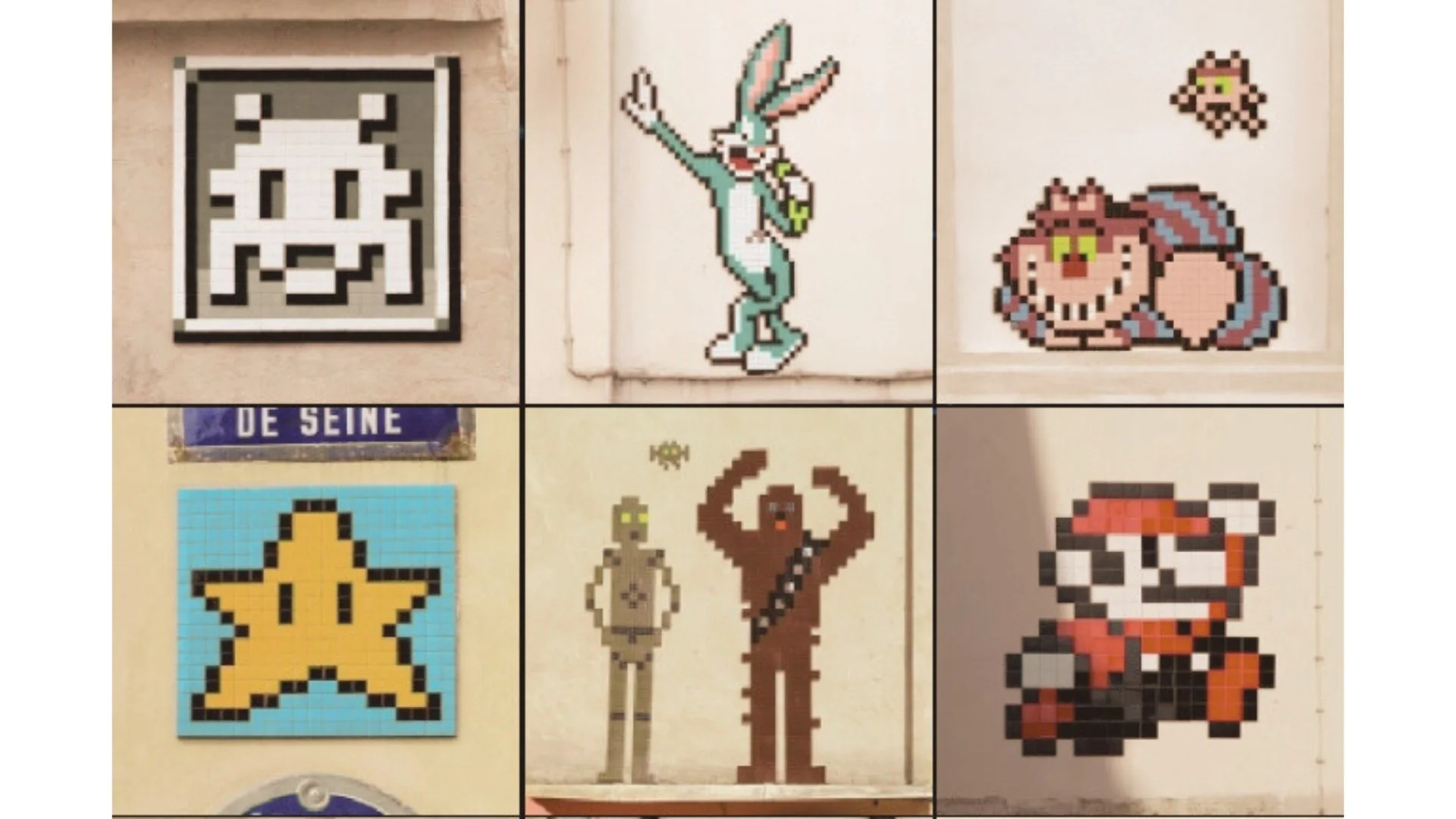Flash Invaders Paris: A Street Art Game Hidden in Plain Sight
Published May 13, 2025
Photo Credit: Bonjour Paris
Walk through Paris, and you might spot a small pixelated alien mosaic on a wall or street corner. These aren’t random. They’re Flash Invaders—part of a street art project that’s quietly transformed the city since 1998.
The artist behind them, known only as Invader, has placed over 1,400 of these Space Invader-inspired mosaics throughout Paris. Each one is carefully crafted from small ceramic tiles and installed in unexpected locations across all 20 arrondissements.
Jean-Paul: "I've been seeing these little guys for twenty years, but it wasn't until my nephew started collecting them with an app that I realized how elaborate the whole system is. There's actually strategy involved in where you look."
Turning Street Art into a Game
The Flash Invaders mobile app turns hunting for these mosaics into an interactive game. When you spot an invader, you photograph it through the app, which verifies your find and awards points based on the piece's rarity and difficulty to locate.
The scoring system ranges from 10 to 50 points per invader. Common pieces near tourist areas typically award fewer points, while those hidden in residential neighborhoods or requiring keen observation skills can earn you much more.
Jessica: "I downloaded the app thinking it would be a fun activity for one afternoon in Montmartre. Three days later, I was still hunting. It completely changed how I explored the city. Suddenly I was noticing corners, rooftops, even random lamp posts I'd never paid attention to."
Where to Start Your Hunt
The highest concentration of invaders clusters around the Marais, Belleville, and the Latin Quarter. Begin your hunt near the Centre Pompidou, where several easily spotted pieces will help you understand what to look for.
Check building corners at eye level first. Invader favors spots where two walls meet, often placing pieces about 5 to 7 feet high. Street lamps—especially older Parisian models—frequently host invaders around their base or partway up the pole.
Jean-Paul: "The artist has a sense of humor about placement. I've found them next to 'No Posting' signs and on buildings that house video game shops. There's always a logic, even when it's not obvious."
Beyond the Tourist Zones
While you'll find invaders near major attractions like the Louvre and Notre-Dame, the real treasures hide in residential areas. The 19th and 20th arrondissements contain some of the highest-scoring pieces, partly because fewer tourists venture that far.
Take the Métro to Belleville or Ménilmontant stations. These neighborhoods offer excellent hunting grounds and give you a deeper look at everyday Paris. The steep streets around Parc de Belleville contain several rare invaders, plus you'll discover local cafés and shops that most visitors miss.
Jessica: "I found my highest-scoring invader in the 13th, near Place d'Italie. I was completely lost, trying to find a restaurant recommendation, when I spotted this elaborate piece tucked behind a market stall. Sometimes the best finds happen when you're not really looking."
Practical Hunting Tips
Bring a portable phone charger. The app drains battery quickly with constant camera use and GPS tracking. Many experienced hunters carry a backup battery just for invader outings.
Morning light works best for photography. The app's verification system can be tricky with shadows or low light, so try to avoid late afternoon or evening unless you're in well-lit areas.
Jean-Paul: "Learn the difference between original invaders and copies. Real ones have a specific tile pattern and are always perfectly square. I've seen tourists spend twenty minutes trying to photograph graffiti that just looks similar."
Why It Matters
Invader's work is more than just quirky street art. It's a clever way of rethinking how we interact with public space. The project predates smartphone gaming, but it fits perfectly into how we move through cities today, half-aware, always on our phones, and often missing what’s right in front of us.
The artist has “invaded” more than 80 cities worldwide, but Paris remains the heart of the project. Each piece is numbered and catalogued, turning the city into a living, expanding outdoor museum.
Jessica: "What I love is how it makes you notice things you'd normally miss. Invader hunting made me slow down and really look. Suddenly I was seeing architectural details, strange balconies, and old shop signs I’d walked past a hundred times."
Make It Part of Your Trip
Plan one afternoon to dive in fully, but keep the app handy as you explore. Some of the best discoveries happen on your way to dinner or walking between museums.
It’s also great for kids and teens who might be fading after too many monuments. Once they spot their first invader, they’ll start scanning the city like detectives. And unlike many tourist activities, this one connects you to something locals actually do.
Jean-Paul: "My American friends always ask what to do in Paris that isn’t touristy. This is it. You’re not watching something, you're participating."
Hunting for Flash Invaders is fun, unexpected, and surprisingly immersive. It turns a regular walk through Paris into a low-key adventure. All you need is your phone, a sense of curiosity, and a little bit of time.










